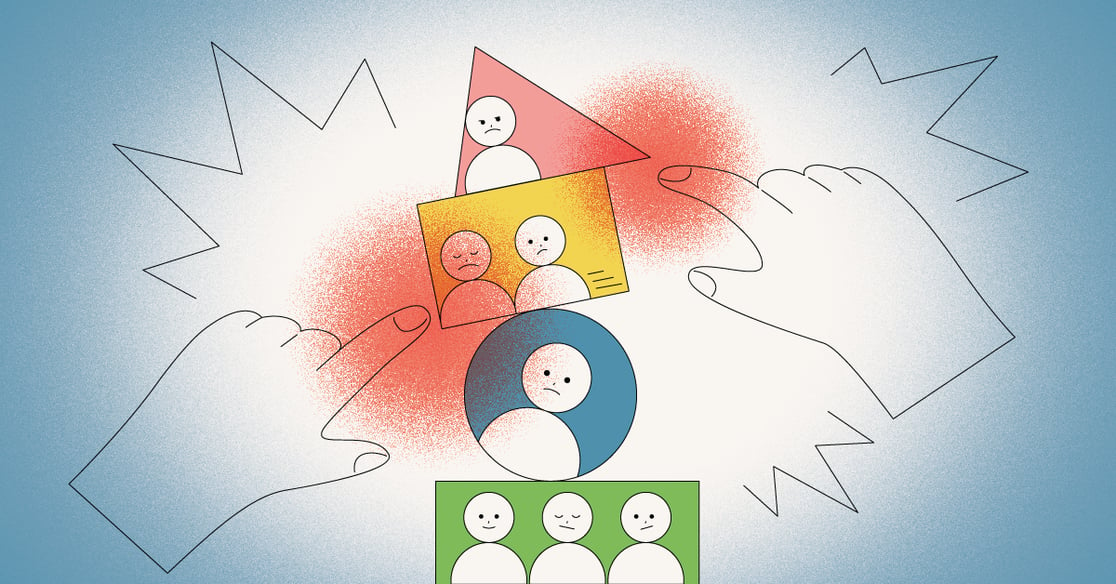
Micromanagement isn't just a corporate buzzword, but if you haven’t experienced it personally, you might not fully understand just how negatively it can affect employees. You also might be micromanaging without even realizing it.
Here’s how micromanagement affects individual employees, teams, and organizations.
What is Micromanaging?
Micromanaging is a term used to describe managing someone in an overly controlling way, with excessive supervision and attention to detail.
Micromanagers might not let their direct reports take calls without them present, shoot down ideas and innovation, and overly criticize and edit work, to name a few examples. Micromanaging can happen in any industry and organization, destroying teams, their quality of work, and the company culture itself.
Micromanagement Breaks Trust
Trust is crucial in the workplace, and this study from the Harvard Business Review just confirms it; “Compared with people at low-trust companies, people at high-trust companies report 74% less stress, 106% more energy at work, 50% higher productivity, 13% fewer sick days, 76% more engagement, 29% more satisfaction with their lives, 40% less burnout.”
You can’t ignore stats like that! There is a night and day difference regarding trust in the workplace. Unfortunately, micromanagement is a surefire way to destroy trust. When leaders monitor their employees too closely or don’t allow them autonomy in their work, it sends a clear message of “I don’t trust you to do it right”.
Micromanagement Destroys Growth Mindsets

A growth mindset embraces change and views mistakes as opportunities. Adopting this mindset benefits all professionals, but it can be difficult to do if supervisors aren’t supportive.
Micromanagers don’t like letting people make decisions on their own. They also tend to be very risk-avoidant, discouraging their teams from embracing challenges. Making mistakes should be a crucial part of the working process— it is necessary for growth and improvement.
It’s important to find situations where making mistakes won’t be disastrous. For example, if you’re trying a new type of ad campaign, budget for mistakes and possible failure of the new method. If your team is starting a new project, schedule in time to daydream and approach the problem in new ways.
Micromanagement Increases Burnout
One of the most insidious traits of a micromanager is a lack of self-awareness and social awareness. More often than not, they are not acting to harm others purposefully. They are likely under stress as well and believe that the best way to get needed results is to resort to micromanaging.
What micromanagers don’t realize is that those habits are detrimental to both short-term and long-term stress for their employees and themself, which can lead to burnout. Forbes shared that “71% of surveyed workers said micromanagement interfered with their job performance, and 85% reported their morale was negatively impacted.”
When a worker feels overly monitored and vulnerable, their work will suffer. They will be more focused on pleasing their manager in the short term, which can affect the quality of their work in the long run, and when a manager refuses to be displeased, the worker might give up entirely on taking pride in their work.
Micromanagement Hinders Your Internal Talent Pipeline
These factors contribute to disengagement and dissatisfaction for individuals, but their negative influence expands into the larger organization. Micromanagers don’t let their team members grow in their positions by stifling opportunity and shutting down innovation. This, in turn, affects your talent pipeline since team members won’t have the skills or motivation to be promoted within the organization.
Your organization will lose out on talented individuals seeking more recognition in their work and a more autonomous work environment, and the remaining employees won’t get the chance to develop the necessary skills. This high turnover and lack of growth will kill any chance of developing an internal talent pipeline.
Moving Past Micromanagement
Learning how micromanagement affects employees is crucial for all leaders and organizations. If you lead a team and recognize yourself in these descriptions of micromanagement, it’s not too late to change! Just noticing these patterns is the first step to finding a better way forward.
If you’re interested in increasing your awareness, TTI Success Insights has the right tools to help.




